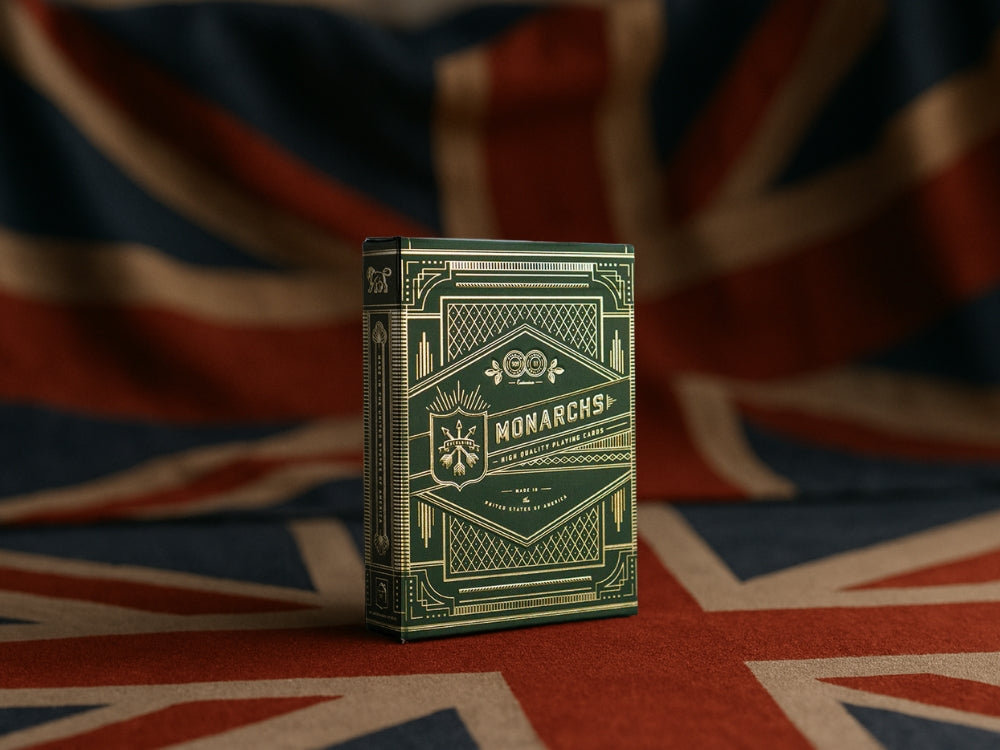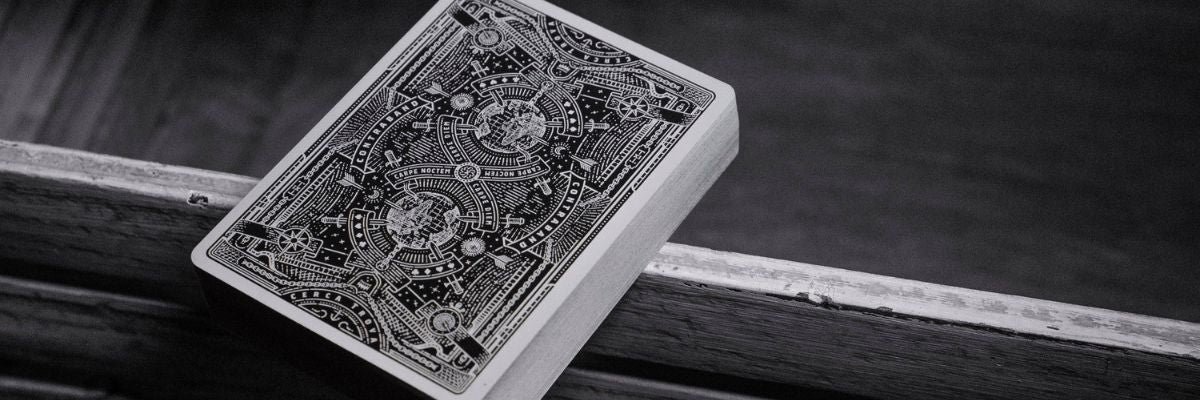Everyone knows the ace card is a good one. It’s the one you hope to draw, the one that can turn a hand around, the one with just enough mystique to make it feel special. But behind its sleek simplicity lies a story far richer than most cards can claim. The ace card has gone from humble beginnings to political statements, wartime propaganda, and pop culture fame. And sure, we’ll cover the basics like how many aces in a deck of cards and is an ace a face card – but trust me, there’s far more going on here than meets the eye.
From humble beginnings to high-ranking royalty
Way back, playing cards started showing up in China during the Tang Dynasty, and some of the earliest games had a card ranked "1" that sometimes held the highest value – a bit of foreshadowing for the ace card's future. As cards travelled through the Islamic world and into Europe, that little one card evolved. In medieval times, the ace wasn’t anything special. In fact, in old dice games, rolling an "ace" was considered bad luck. Not exactly the glamorous reputation we know today.
But come the 15th century, things started shifting. A card game called Trappola was one of the first to bump the ace to top spot in all suits. And then came the French Revolution. The common people overthrew the aristocracy, and in a beautiful twist, the lowest card (the ace) was promoted above kings and queens. It was more than a game rule; it was a political statement.
Today, depending on the game, the ace can be high, low, or (in some glorious cases) both. If you've ever wondered what number is ace in cards, it's usually considered a one – but its actual value can shift depending on the rules. In Rummy, for instance, you can go Ace-2-3 or Queen-King-Ace. And sometimes, even King-Ace-2 - that's called "going around the corner".
The art and symbolism hiding in plain sight
For something that looks so simple, the ace card has picked up layers of meaning over the centuries. Numerologically, it’s the start of everything. One. Unity. A fresh beginning. And in Tarot, each ace represents the purest form of its suit's energy: hearts for love, clubs for creativity, diamonds for prosperity, spades for thought and challenge.
This symbolism even spills into how cards are designed. Ever noticed how the ace of spades is nearly always fancier than the rest? That’s not just to make it look cool (though it definitely helps). It all started in 1711, when Queen Anne introduced a stamp duty on playing cards in Britain to raise revenue. At first, a hand stamp was applied to one card (usually the ace of spades) to show tax had been paid. It’s believed the ace of spades was chosen because it often sat at the top of the deck, making it the most visible and logical place for a tax stamp. Then in 1765, things got more official: the Stamp Office began printing a specially designed Ace of Spades with royal insignia and an elaborate coat of arms. This wasn’t just any old card anymore – it was a legal requirement.
Because of its role as the “duty card,” the ace of spades became the most ornate card in the deck. Forging it was a serious offence. In 1805, a man named Richard Harding was actually hanged for counterfeiting the taxed ace. During the Napoleonic Wars, the cost of card tax rose sharply, and in 1828, an even more intricate version of the card, nicknamed the “Old Frizzle” Duty Ace, was introduced. The tax was finally abolished in 1960, quietly ending nearly 250 years of stamped decks, but the tradition stuck. British-made luxury playing cards still honour this legacy today, turning the ace of spades into something closer to a work of art than a game piece.
And in Germany? The "ace" is actually a deuce (two pips on it and everything) but still called an ace. Confusing.
Aces in action: culture, language, and war
Beyond the gaming table, aces have left their mark in all sorts of unexpected places. In language, we talk about someone being an "ace" if they're brilliant at something, or having an "ace up your sleeve" as a sneaky advantage.
In poker, there's the legendary "Dead Man's Hand" – two black aces and two black eights, supposedly the hand Wild Bill Hickok held when he was shot. In wartime, the ace took on even more weight. During the Vietnam War, American soldiers believed the spade symbol signified death in Vietnamese culture, so they scattered ace of spades cards in the jungle for psychological warfare. The United States Playing Card Company even sent crates of just that card.
And who could forget the James Bond playing cards and their sleek black-and-white styling, always with a killer ace design? The ace card has become shorthand for danger, elegance, and just a hint of rebellion.
Wait, how many aces are there in a deck of cards?
There are four. One per suit: hearts, diamonds, clubs, and spades. No great mystery there, but still, they somehow manage to feel a little more special than the rest. Maybe it’s the design. Maybe it’s the symbolism. Or maybe it’s just the thrill of flipping one over at exactly the right moment.
Why the ace might be your new favourite
So, is an ace a face card? Technically, no. It’s not a king, queen or jack – but in terms of presence, it often steals the show. It can lead, follow, or sneak in somewhere unexpected. And for such a minimal design, it carries a lot of weight.
But what really makes the ace shine is how it feels in your hand – especially if you're using a beautiful deck. Every detail counts when you're using premium playing cards – from the feel of the cardstock to the way the edges catch the light. The colours, the finishes, even the satisfying snap when you shuffle. Those little design choices elevate the whole experience.
Take the Harry Potter playing cards packed with tiny design flourishes that feel like little inside jokes for fans. These aren’t just tools for games, they’re collectables, conversation starters, and exactly the sort of thing that make you reach for the deck on a lazy afternoon.
The ace carries itself with a kind of quiet authority. When it shows up, the mood shifts. There’s a tension, an anticipation, like the game just got interesting. You can’t help but take notice. And often, it’s the card that sticks in your memory long after the game is over.
And the ace of spades? Still manages to be more iconic than most kings.




